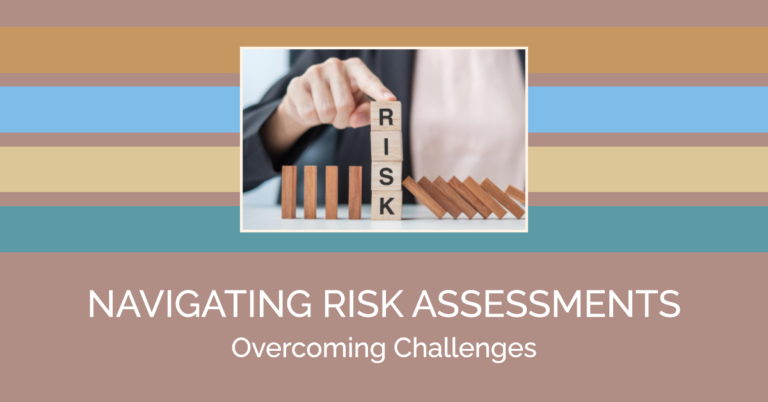Hi there, risk managers and comedy enthusiasts; welcome to a conversation that might seem incongruent.
As you are about to find out, through the lens of television entertainment, there’s a lot that Comedy Central has to say about risk management – and vice versa.
So, the obvious question. What does Comedy Central have to do with risk management?
When Life Hands You Laughter, Manage It!
Comedy Central, home of stand-up specials, classic sketch programmes and more fake news programmes than you can shake a stick at, is no stranger to chart-topping success.
Yet, Comedy Central is also no stranger to failure.
To illustrate, when you’re a TV network making people laugh, you better be the last one laughing at how you’ve set yourself up for a monumental failure.
The Punchline: Risk in Entertainment
For starters, it is helpful to demystify the concept of risk in the entertainment industry: risk management is identifying, analysing, assessing and prioritising risks and coordinating resources to minimise, monitor, control probability, and mitigate the impact of undesirable events or adverse consequences.
Sounds so sterile. That’s where the fun and the carnage begin.
Provocative doorstepping and smart-ass juvenilia epitomised by Comedy Central’s flagship shows, South Park and The Daily Show, have always been at the heart of the channel’s strategy. That approach is precisely that: a business strategy whereby a view of the world is calibrated to provide a razor-sharp view into a particular eyeballs market, and where taking audacious dives with topical hot potatoes can net serious dividends and even stardom for the channel and its staff, as well as for intrepid presenters, comedians and actors.
But it’s also a business strategy that, thanks to how it places the channel and its stars within the international news cycle, risks alienating advertisers, infuriating viewers, and finding itself on the ropes in court.
Balancing Acts: The Tightrope Walk of Programming
You are the head of programming at Comedy Central, and custard pies fly at your face – pitches.
How do you figure out which shows will go to air?
Each new pilot is a risk. Does anyone remember Moonbeam City? Just? That show had brilliant animation and a star-laden voice cast; it deserved better. But then there are the ‘dark horses’, shows like Broad City, which started as an ‘online exclusive’ and became a hit.
A crucial way to minimise the risk of a new show is a mix of gut feeling, market research and pilot testing, which often debuts new material in a shorter pilot for a show or in a special slot.

The Vault: Learning from the Past
They tell us that medicine is for the soul. Medicine, they told us, was found inside a laugh.
But when looking back, you see the shadow of remorse on every month of Comedy Central’s history and the channel’s always-evolving sense of what works.
Remember when the stand-ups were everything? Some specials were huge. Others, not so much. Every show that worked and didn’t work was a data point, a bit of consumer research, another clue to shape-shifting taste and laughter.
Ruffling Feathers: Navigating Controversy
Comedy, of course, is not a stranger to controversy.
Since its debut in 1997, South Park has been fined three times by the Federal Communications Commission for being South Park; its creators showed no signs of toning down.
But Comedy Central doesn’t shy away from controversy; it courts it. The timing and context of a show, explicit material warnings and 10 pm broadcast slots are as much a part of the product as the offence. And the adult nature of their brand has helped them assume some leeway where others cannot.
A willingness to respond naturally and swiftly to backlash is essential. Perceived missteps can be called out and rectified. In that case, those missteps can often be turned into elaborate opportunities to demonstrate that a speaker can listen to their audience, even when this means offending them.
The Joke’s Not Over: Innovation and Adaptation
Risk management isn’t all about aversion but also about locating opportunity.
Comedy Central can sniff out talent and trends consistent with shifting demographics. Faced with the explosion of social media, they maintained their audience’s affinity by utilising Twitter, Instagram and YouTube.
Think back to the roast of Justin Bieber that trended around the world; this kind of thing is a masterclass in finesse edginess: it drummed up hype without tipping over into being appalling because it balanced self-awareness with sincerity and took place on a terrain where rollbacks could ensure nothing stayed too offensive for too long.
Final Thoughts
The channel’s journey through the often unpredictable TV landscape proves that sometimes it pays to bet big on the funniest horses, while other times it’s about having the right strategy in place.
What are the lessons for risk-taking from our friends at Comedy Central?
Keep the spontaneous coming, but staying abreast of what’s happening will help. Be willing to experiment or detour, fail forward and triumph ahead. And don’t forget to add a little humour. Sometimes, the best management is the oldest medicine.






